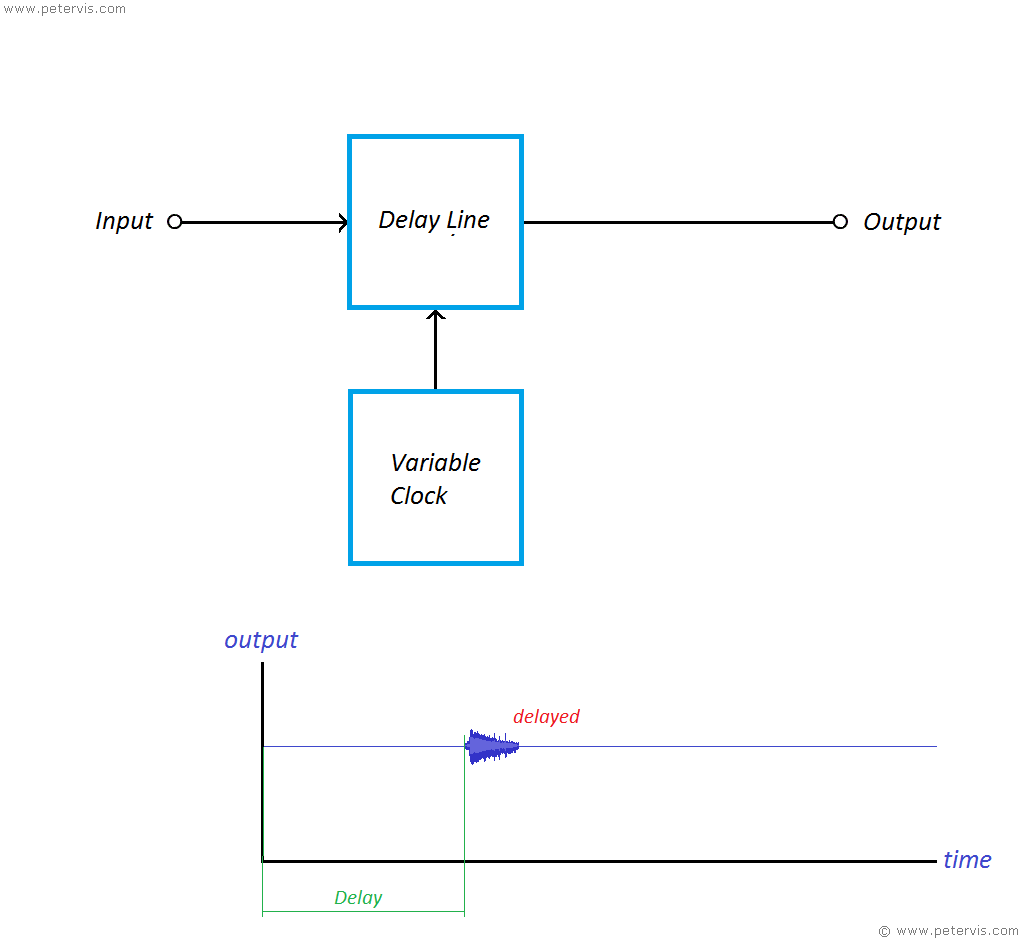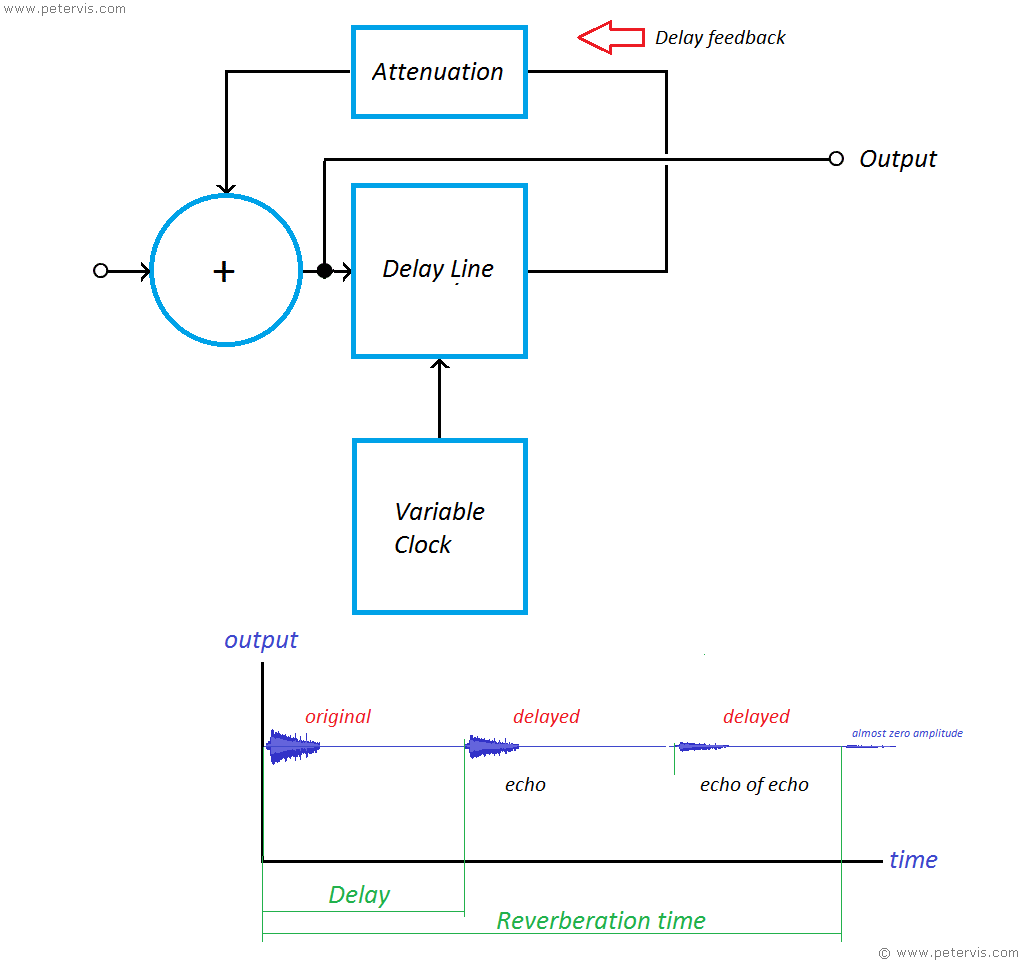PT2399 Echo and Reverb Basics
The PT2399 is an Echo Processor IC manufactured by the Princeton Technology Group. This IC converts the input analogue signal into a digital bit stream and stores it in the internal 44-Kbit RAM memory. After the desired delay time, the contents of the memory are converted back into an analogue signal. This ICs documentation suggests that delay times between 342-ms and 31.3-ms are possible, hence it is extremely useful for creating guitar reverberation effects and in the documentation they show two circuit examples. Here we look at the purpose behind the two circuits and their configurations. This multi-page article looks into the basic operation of this IC and a prototype circuit construction.

The second circuit (surround/delay) in the PT2399 documentation follows this type of configuration to produce a constant delay in the audio. As you can see, the output from the delay line is not fed back into the input; hence it is a one-time delay. These types of circuits are useful for surround sound systems to delay the sound from any nearby speaker. It can also be useful for synchronising audio and video together in old films. However since it is a single delayed output, it is not useful for guitar effects.

If we insert a summing circuit in the surround/delay circuit, then the output will consist of the original signal and the delayed signal. Since there is no feedback loop, there will be only one echo, and this type of circuit can be useful for guitar effects.

The first circuit (echo) in the PT2399 documentation follows this type of configuration where the output from the delay line is fed back to the input. The output of this circuit is tapped out from the first stage which in the circuit is the LPF1 filter. It receives multiple feedbacks, hence saving the constructor from having to build an external mixer. When we feed the delayed signal (echo) back into the input, it produces another echo; hence it is an echo of an echo. Providing the signal amplitude remains constant and there is no attenuation or degradation of any sort, the signal continues circling through the feedback loop...

If we now insert an attenuator in the feedback loop, then every time the echo passes through the loop its amplitude is attenuated a little bit. Hence each successive echo will have a smaller amplitude until eventually the amplitude will be so small that nothing will be heard. Hence this type of configuration produces a fading echo. A circuit that produces fading echoes is also very useful for guitar effects because if the attenuation and delays are set correctly it is possible to get one or two echoes that fade out fast.
This Article Continues...
Echo and Reverb BasicsGuitar Reverb
Basic Surround Delay Circuit
Basic Echo Circuit
PT2399 Overall Configuration
Testing and Troubleshooting
Pin 6 Hack
Pete's Guitar Reverb Circuit
Track Cuts
Board Links
Circuit Board Component Layout
Completed Board
Switch and Potentiometer Wiring
Chip Socket
Power Supply Circuit Diagram
Power Supply Board Layout
Power Supply Board Cuts and Links
Power Supply Board Completed
Enclosure Preparation
Guitar Reverb Completed Project
Connecting and Testing